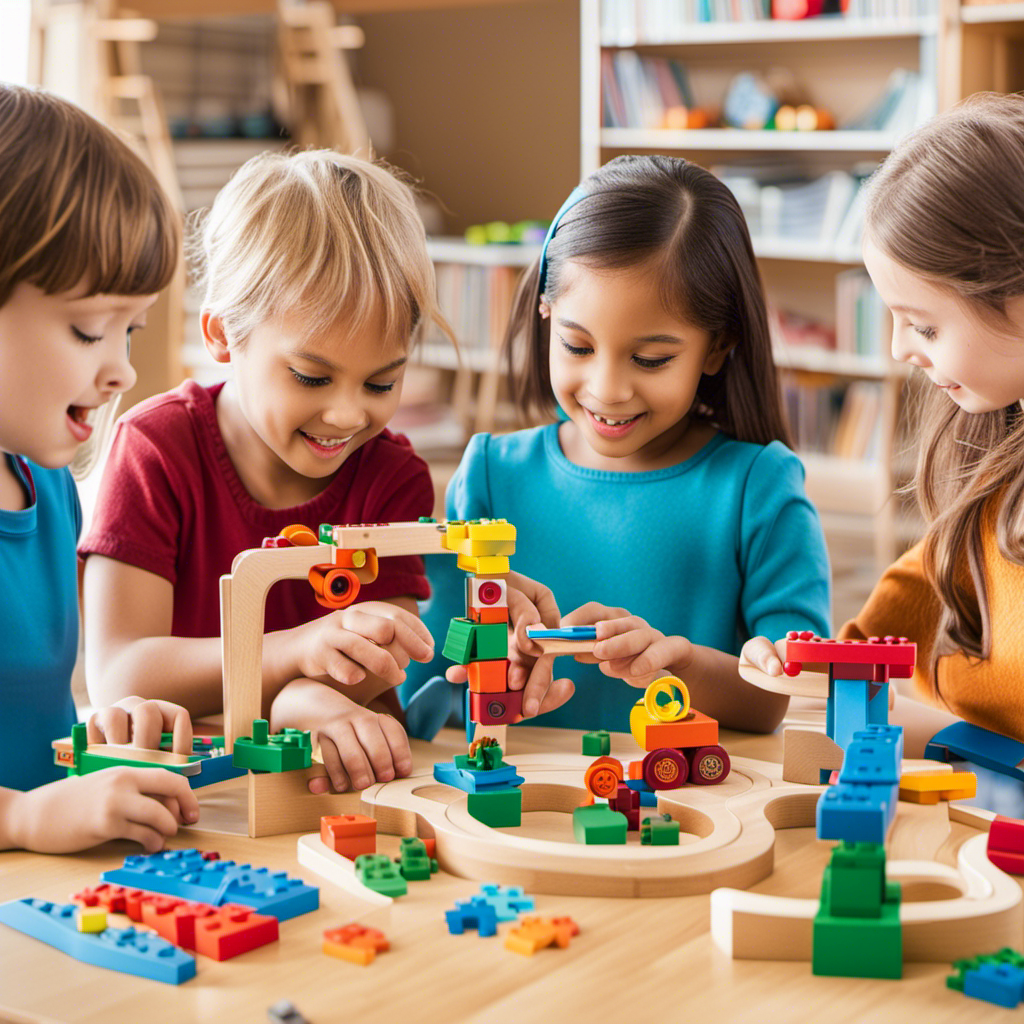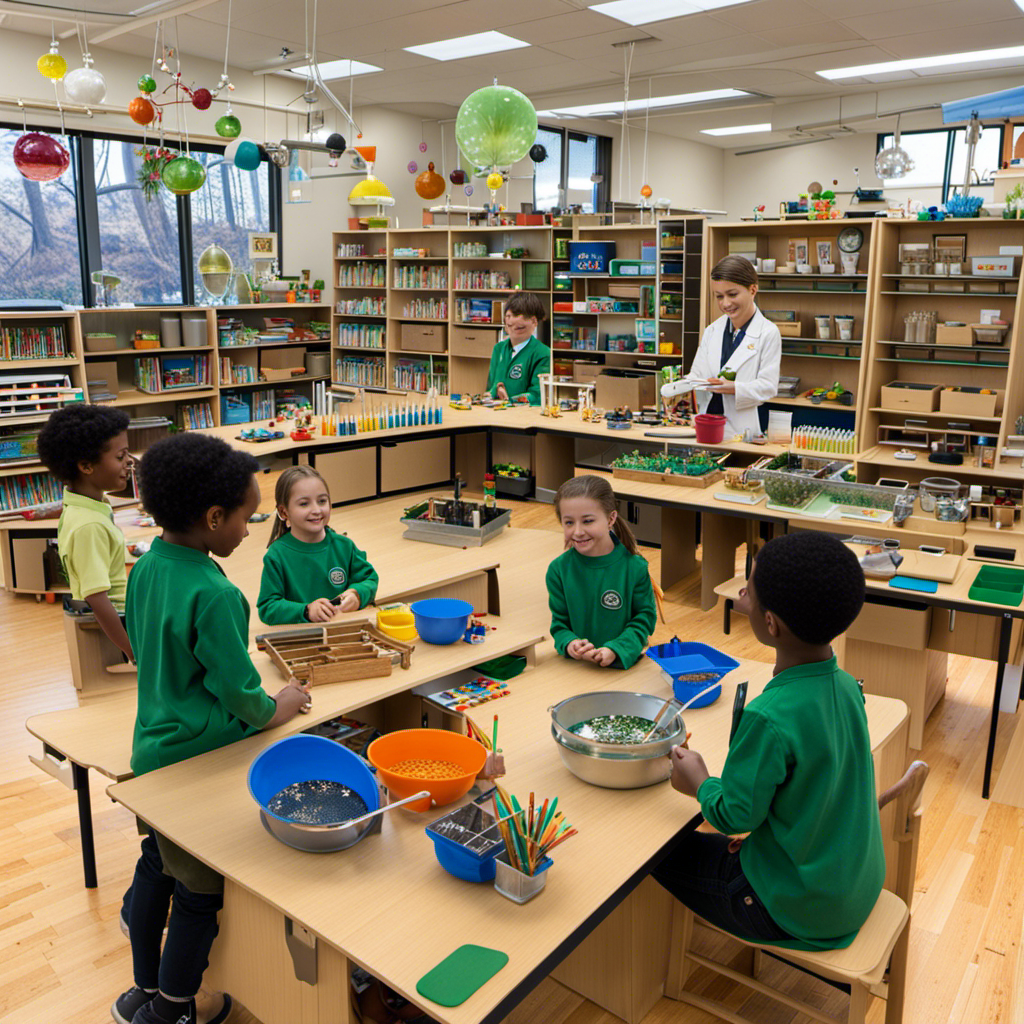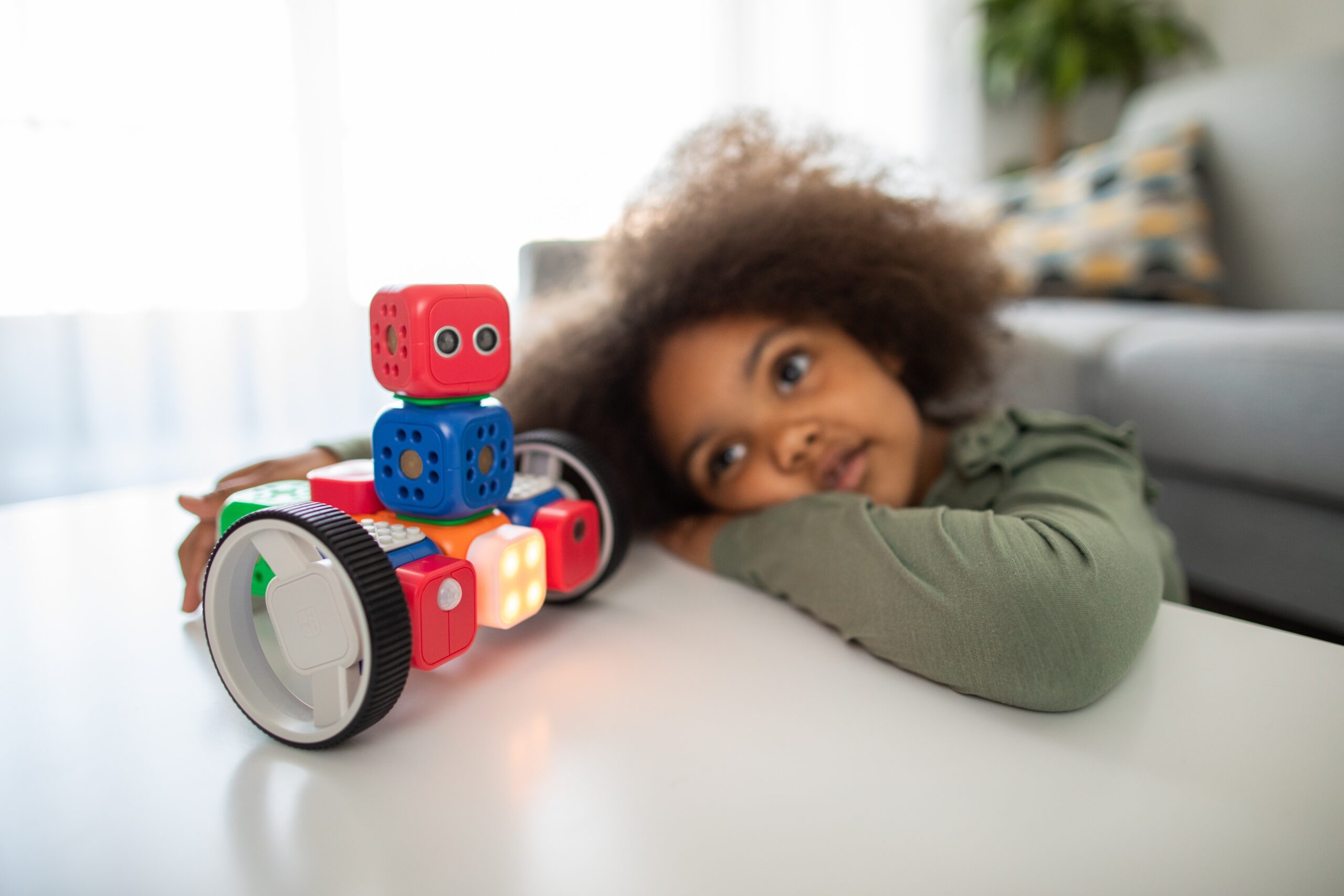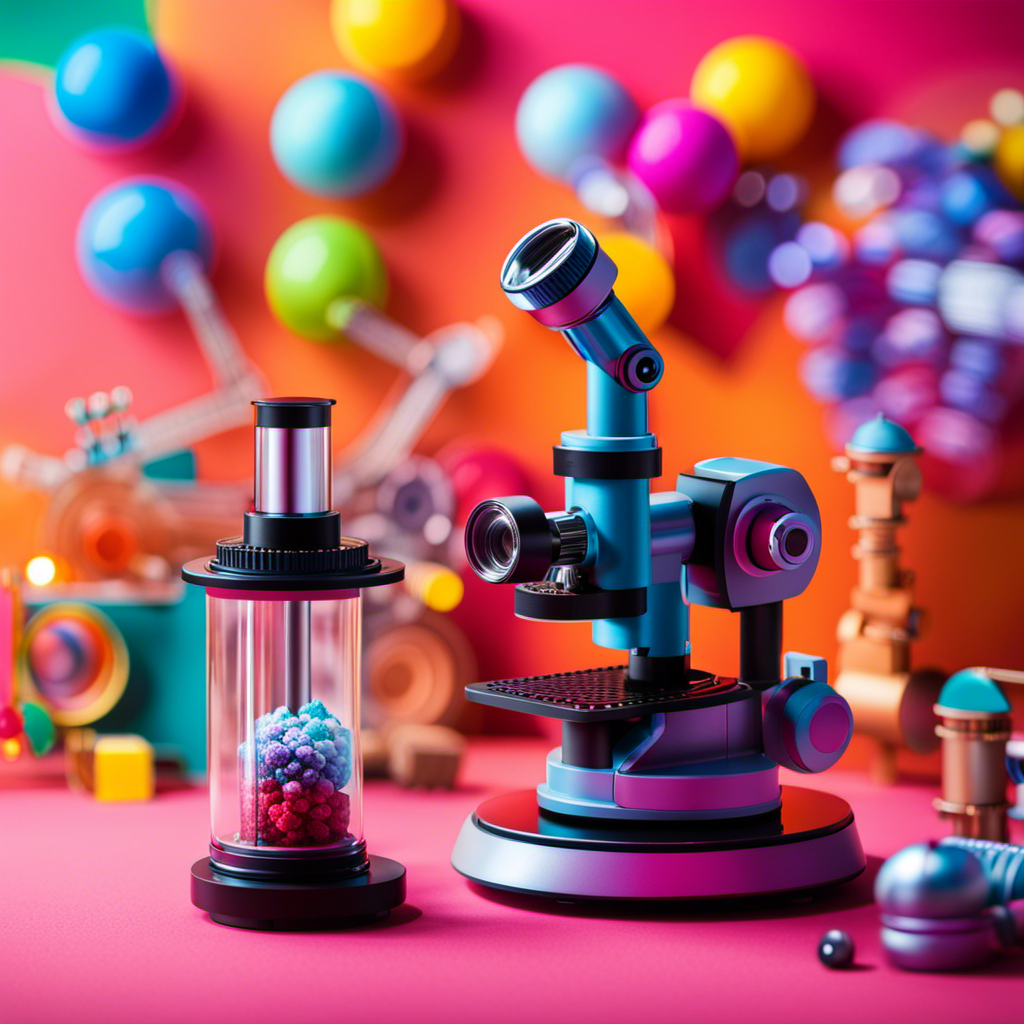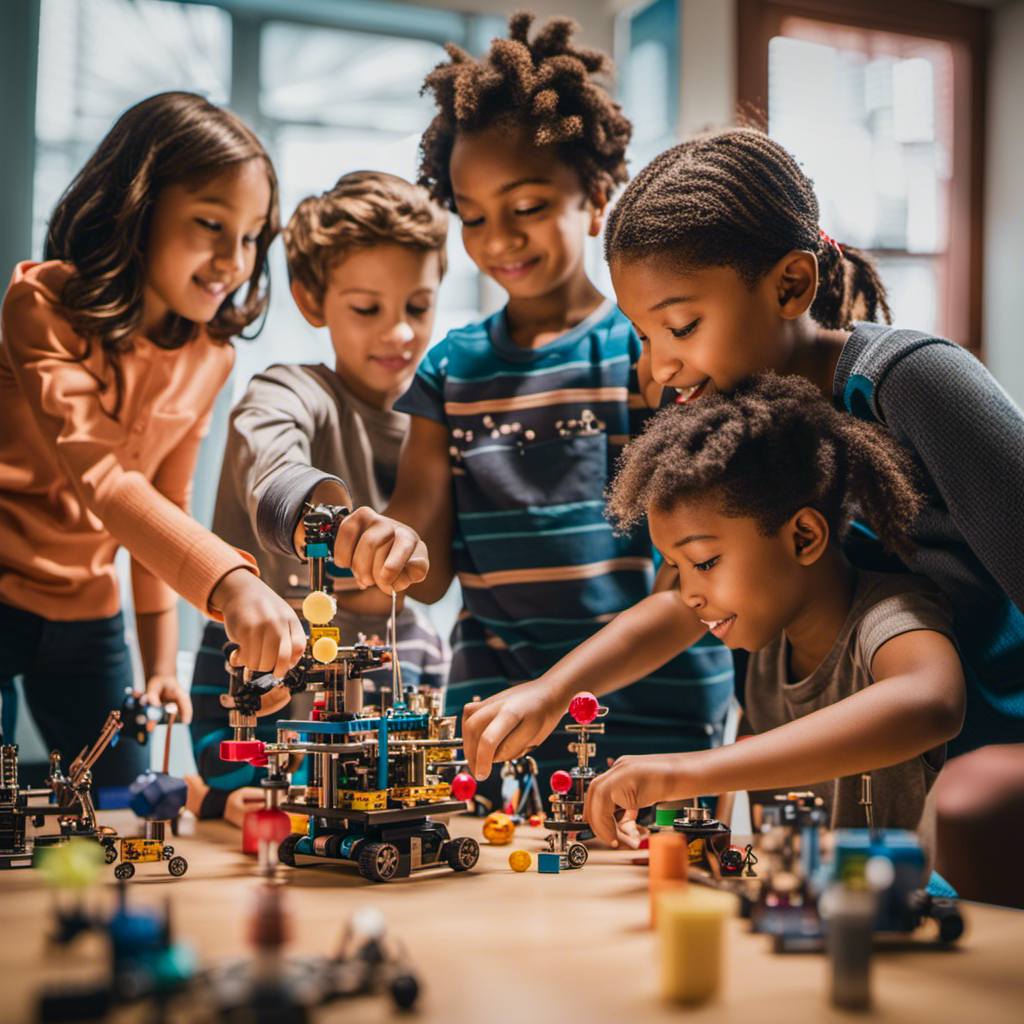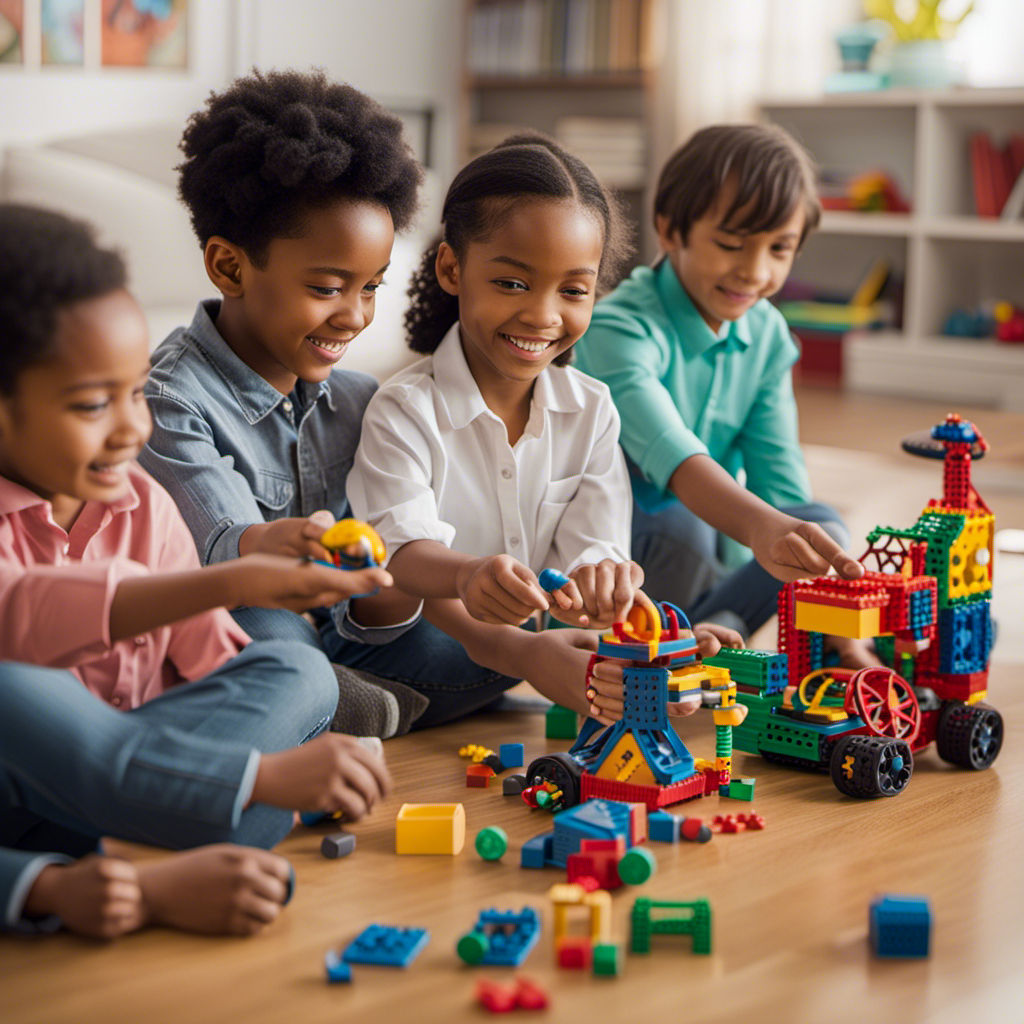When it comes to choosing high-quality educational toys for children, the debate between STEM toys and Montessori toys is a popular topic of discussion.
As a parent, I want to ensure that my child’s playtime is not only fun but also beneficial for their development. STEM toys, with their focus on science, technology, engineering, and mathematics, offer a hands-on approach to learning.
On the other hand, Montessori toys, inspired by Maria Montessori’s educational philosophy, prioritize sensory development and independent learning.
So, which one is the winner? Let’s dive in and explore the pros and cons of both options.
Key Takeaways
- STEM toys focus on science, technology, engineering, and mathematics, while Montessori toys focus on hands-on activities and exploration.
- STEM toys prepare children for a technology-driven future, while Montessori toys promote independent learning and fine motor skills development.
- Both types of toys have their pros and cons depending on the child’s interests and learning style.
- STEM toys and Montessori toys both have the potential to improve cognitive development, physical coordination, social skills, creativity, and a love for learning.
The Importance of Educational Toys
I believe that educational toys play a crucial role in fostering cognitive development, enhancing physical coordination, and promoting social skills.
Research has shown that educational toys stimulate the brain and help children learn important skills. For example, STEM toys encourage critical thinking and problem-solving abilities, preparing children for a technology-driven future.
On the other hand, Montessori toys focus on hands-on activities and independent learning, developing fine motor skills and cognitive abilities. Both types of toys have their advantages and limitations.
STEM toys can be overwhelming and have limited scope for development in other areas, while Montessori toys may require supervision and lack opportunities to interact with technology.
Nonetheless, both types of toys offer benefits like improving cognitive development, physical coordination, and social skills, while fostering creativity and a love for learning.
Understanding STEM Toys
STEM toys are specifically designed to engage children in interactive and fun learning experiences related to science, technology, engineering, and mathematics. These toys offer a wide range of benefits for children, including the development of critical thinking and problem-solving skills. They encourage exploration, experimentation, and curiosity, fostering a love for science and technology.
STEM toys also prepare children for a technology-driven future, potentially leading to future career paths in these fields. However, there are some limitations to consider. Some STEM toys can be overwhelming, and there may be a limited scope for development in other areas. Additionally, these toys can be expensive and may lead to frustration or discouragement.
It’s important to find a balance between STEM toys and other types of toys that promote development in arts, language, and social skills.
Exploring Montessori Toys
Exploring Montessori toys allows for hands-on learning experiences that focus on developing fine motor skills, cognitive abilities, and sensory exploration. These toys, based on the educational philosophy of Maria Montessori, are designed to be simple, beautiful, and durable. Made from natural materials like wood, metal, and fabric, they promote independent learning and stimulate curiosity.
Montessori toys aid in the development of language, fine motor skills, problem-solving, and critical thinking. They also enhance fine motor skills and hand-eye coordination, reducing exposure to harmful chemicals found in some plastic toys. While Montessori toys may be costly due to high-quality, natural materials, they provide a sustainable and environmentally friendly option.
However, they do have limitations such as limited technology interaction and the need for supervision due to small parts or complex tasks. Overall, Montessori toys offer a research-based approach to learning that promotes cognitive and motor skill development.
Benefits of STEM Toys
Using STEM toys has been incredibly beneficial for my child’s cognitive development and problem-solving skills. These toys have provided a hands-on and interactive way for my child to explore concepts in science, technology, engineering, and mathematics. Through building, experimenting, and coding, my child has developed critical thinking skills and the ability to solve complex problems.
STEM toys have also fostered a love for science and technology, preparing my child for a future driven by technology. However, it is important to note that STEM toys may have a limited scope for development in other areas, such as arts, language, and social skills. Additionally, some STEM toys can be expensive and may lead to frustration or discouragement.
Despite these limitations, the benefits of STEM toys in promoting cognitive development and problem-solving skills cannot be denied.
Advantages of Montessori Toys
I’ve found that Montessori toys offer a unique approach to learning. They focus on hands-on activities and independent exploration. These toys have several advantages that can evoke an emotional response in the audience.
-
Foster a sense of curiosity and wonder: Montessori toys stimulate curiosity and encourage independent exploration. They allow children to discover and learn at their own pace.
-
Promote a love for learning: By providing engaging and interactive experiences, Montessori toys can spark a love for learning and a desire to explore the world around them.
-
Nurture creativity and imagination: Montessori toys are designed to be simple, beautiful, and durable. They allow children to use their imagination and creativity to create their own play scenarios.
These emotional responses are supported by research that shows the positive impact of Montessori toys on a child’s development. This includes the development of fine motor skills, problem-solving abilities, and critical thinking skills.
Comparing STEM and Montessori Toys
When comparing STEM toys and Montessori toys, it becomes evident that each type offers distinct approaches to learning and development.
STEM toys focus on science, technology, engineering, and mathematics, aiming to prepare children for a technology-driven future. These toys encourage critical thinking, problem-solving, and hands-on exploration. They foster a love for science and technology and can lead to future career paths. However, they may be overwhelming for some children, have a limited scope for development in other areas, and can be expensive.
On the other hand, Montessori toys, based on Maria Montessori’s educational philosophy, promote independent learning, fine motor skills development, and curiosity through simple, beautiful, and durable designs. They aim to stimulate cognitive abilities, problem-solving skills, and a love for learning. However, they may require supervision due to small parts or complex tasks, and they don’t provide opportunities for understanding and interacting with technology.
Ultimately, the choice between STEM toys and Montessori toys depends on the child’s interests and learning style.
Factors to Consider When Choosing Educational Toys
Consideration should be given to various factors when choosing toys for educational purposes. It is important to think about the child’s interests and learning style.
For STEM toys, look for ones that align with their interests in science, technology, engineering, and mathematics. These toys can develop critical thinking and problem-solving skills, while also fostering a love for these subjects. However, they may be overwhelming, expensive, and have limited scope for development in other areas.
On the other hand, Montessori toys focus on hands-on activities and exploration, promoting independent learning and fine motor skills development. They are made from natural materials and encourage curiosity and problem-solving. But, they may require supervision due to small parts and don’t provide opportunities to understand technology.
Ultimately, the best choice depends on the child’s individual needs and preferences.
Finding the Right Balance: STEM and Montessori Toys
After considering the factors to keep in mind when choosing educational toys, it’s important to find the right balance between STEM toys and Montessori toys. Both types of toys have their own advantages and limitations, so finding a balance that suits your child’s interests and learning style is key. To help you make an informed decision, I have created a table comparing STEM toys and Montessori toys:
| STEM Toys | Montessori Toys |
|---|---|
| Focus on science and technology | Focus on hands-on activities and exploration |
| Prepare for a technology-driven future | Promote independent learning and fine motor skills development |
| Can be overwhelming | May require supervision due to small parts or complex tasks |
| Limited scope for development in other areas | Don’t provide opportunities to understand and interact with technology |
| Can be expensive | Can be a choking hazard or confusing for younger children |
Building Cognitive Skills With Educational Toys
I can build my child’s cognitive skills by providing them with interactive and engaging toys. Research shows that toys like STEM toys and Montessori toys are effective in developing cognitive abilities.
STEM toys focus on science, technology, engineering, and mathematics, promoting critical thinking and problem-solving skills. These toys encourage exploration, experimentation, and curiosity, preparing children for a technology-driven future.
On the other hand, Montessori toys, based on Maria Montessori’s educational philosophy, focus on developing senses, motor skills, and cognitive abilities. They promote independent learning and fine motor skills development through hands-on activities and exploration.
Both types of toys have their pros and cons, depending on the child’s interests and learning style. By providing these toys, I can help my child improve cognitive development, thinking, problem-solving skills, physical coordination, and social skills, while fostering creativity, imagination, and a love for learning.
Enhancing Motor Skills Through Play
Playing with interactive and engaging toys can enhance my child’s motor skills. This includes developing physical coordination, balance, and dexterity. Research shows that when children engage in play that requires movement and manipulation of objects, their fine and gross motor skills improve. Activities like building with blocks, playing with puzzles, or using tools to assemble STEM projects can help with this. By manipulating objects, children learn to control their movements, improving hand-eye coordination and fine motor skills. This type of play also helps children develop balance and body awareness as they navigate and explore their environment. Additionally, engaging in play that requires physical movement can help children release energy and develop a healthy sense of physicality. Providing interactive and engaging toys is a great way to support my child’s motor skill development.
Promoting Social Development With Educational Toys
In the previous subtopic, we explored how educational toys can enhance motor skills through play. Now, let’s shift our focus to the important role that these toys play in promoting social development in children.
When children engage with educational toys, they have the opportunity to interact and engage in cooperative play with their peers. This interaction fosters the development of essential social skills such as communication, empathy, and teamwork. Through collaborative play, children learn to take turns, share, negotiate, and resolve conflicts, which are vital skills for building positive relationships.
To illustrate the benefits of educational toys in promoting social development, let’s take a look at the following table:
| Benefits of Educational Toys in Promoting Social Development |
|---|
| Development of essential social skills such as communication, empathy, and teamwork |
| Opportunity to interact and engage in cooperative play with peers |
| Learning to take turns, share, negotiate, and resolve conflicts |
| Building positive relationships through collaborative play |
Fostering Creativity and Imagination
Engaging with these toys sparks my creativity and imagination, encouraging me to explore new ideas and engage in imaginative play. The combination of STEM toys and Montessori toys provides a well-rounded approach to fostering creativity and imagination in children.
-
Open-ended play: Both STEM and Montessori toys allow for open-ended play, where children are free to explore and create without limitations. This freedom allows for the development of imaginative thinking and problem-solving skills.
-
Hands-on experiences: Both types of toys provide hands-on experiences that engage the senses and promote creativity. Through building, experimenting, and manipulating objects, children are able to express their imagination and bring their ideas to life.
-
Inspiring concepts: STEM toys introduce concepts related to science, technology, engineering, and mathematics, while Montessori toys offer a wide range of subjects to explore, from language and music to nature and culture. These concepts provide a foundation for imaginative play and encourage children to think outside the box.
Overall, both STEM and Montessori toys play a vital role in fostering creativity and imagination in children by providing opportunities for open-ended play, hands-on experiences, and exposure to inspiring concepts.
Making an Informed Decision: STEM or Montessori?
When considering which type of toy to choose, I weigh the benefits and limitations of both STEM and Montessori options.
STEM toys focus on science, technology, engineering, and mathematics, preparing children for a technology-driven future. They promote critical thinking, problem-solving, and creativity through hands-on challenges and experiments. However, some STEM toys can be overwhelming, have a limited scope for development in other areas, and can be expensive.
On the other hand, Montessori toys, based on Maria Montessori’s educational philosophy, focus on hands-on activities, independent learning, and fine motor skills development. They stimulate curiosity, encourage exploration, and foster a love for learning. However, Montessori toys may require supervision due to small parts or complex tasks, don’t provide opportunities to understand and interact with technology, and can be a choking hazard or confusing for younger children.
Ultimately, the choice between STEM and Montessori toys depends on the child’s interests and learning style.
Frequently Asked Questions
Are STEM Toys Suitable for All Age Groups?
STEM toys are suitable for a wide range of age groups. They can be adapted to meet the developmental needs of children at different stages. Younger children can benefit from simpler STEM toys that focus on basic concepts. Older children can engage with more complex toys that challenge their critical thinking and problem-solving skills. However, it’s important to consider each child’s individual interests and abilities when choosing STEM toys.
Can Montessori Toys Be Used in a School or Classroom Setting?
Yes, Montessori toys can definitely be used in a school or classroom setting. They are designed to promote independent learning, fine motor skills development, and problem-solving.
These toys stimulate curiosity, encourage exploration, and foster a love for learning. They also help improve cognitive development, physical coordination, and social skills through interaction and cooperative play.
However, it’s important to note that Montessori toys may require supervision due to small parts or complex tasks, and they don’t provide opportunities to understand and interact with technology.
Are There Any Safety Concerns With STEM Toys?
There are some safety concerns with STEM toys that parents and educators should be aware of. According to a study conducted by the U.S. Consumer Product Safety Commission, there has been an increase in the number of injuries associated with STEM toys in recent years.
Common safety concerns include choking hazards from small parts, potential for electrical shocks with certain robotic kits, and the use of toxic chemicals in some materials.
It is important to carefully read and follow the safety guidelines provided by the manufacturer to ensure a safe play experience.
Do Montessori Toys Incorporate Technology in Any Way?
No, Montessori toys do not incorporate technology in any way. They are based on the educational philosophy of Maria Montessori and focus on hands-on activities and exploration. These toys are designed to stimulate curiosity and encourage independent learning, while developing fine motor skills and problem-solving abilities.
However, they do not provide opportunities for children to understand and interact with technology. Montessori toys can be a choking hazard or confusing for younger children and may require supervision due to small parts or complex tasks.
How Can Parents Determine Which Type of Toy Is Best for Their Child’s Learning Style?
When determining the best type of toy for a child’s learning style, parents should consider their child’s interests and preferences. It’s important to observe how they engage with different types of toys and activities.
Some children may thrive with STEM toys, which promote critical thinking and problem-solving skills. Others may benefit from Montessori toys, which focus on hands-on exploration and independent learning.
Ultimately, it’s about finding a balance that supports their overall development and aligns with their individual learning style.
Avery brings the magic of words to life at Toddler Ride On Toys. As a dedicated writer, she combines her love for writing with her fascination for child development to craft articles that resonate with our audience. With a background in journalism and a knack for storytelling, Avery’s pieces inform, engage, and inspire parents and caregivers.
